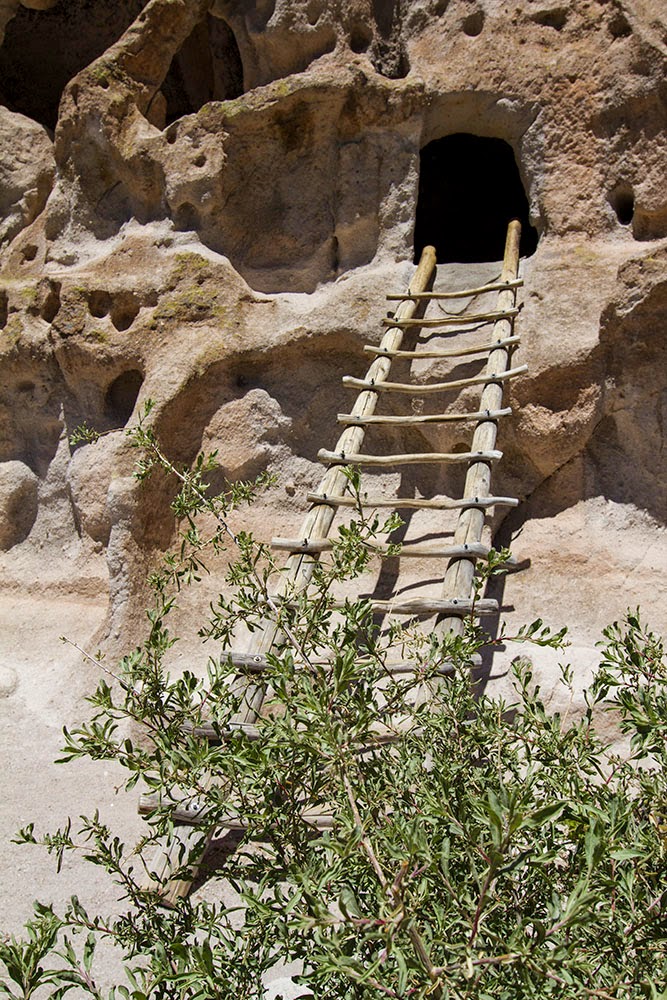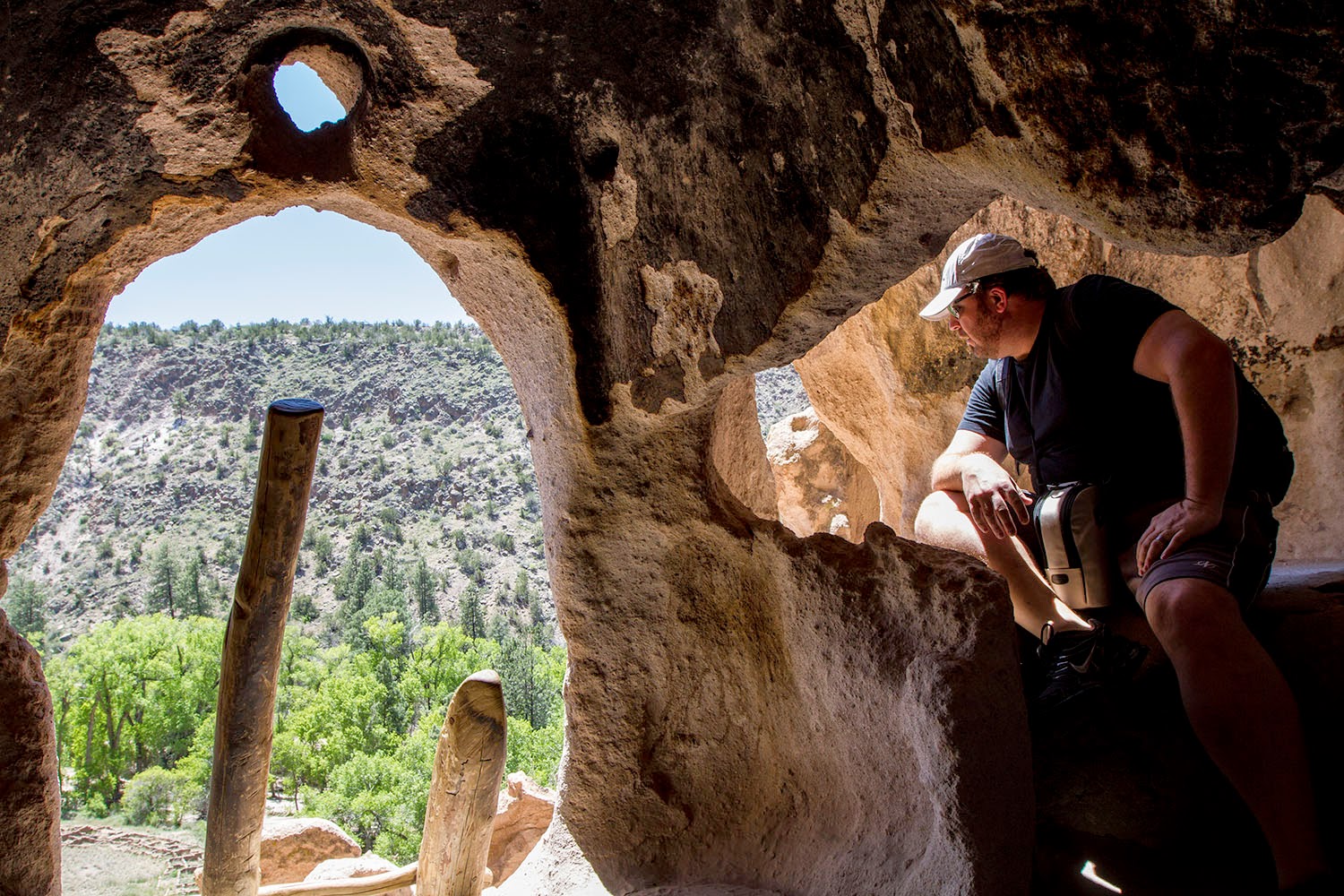"Enchantment" is a word not uncommon in the world of travel marketing; the claim is made by many a destination looking to attract visitors. Yet, having been to New Mexico, I willingly grant them their claim to "enchantment". There is undoubtedly a taste of whimsy and mystery to this land.
The area around Santa Fe and Taos is a high plateau, desert flatlands ringed by mountains. The air is thin and bone-dry, the sun scorching the skin even during 70 degree days. At night, it was frosty-cold despite being mid-May. But the dryness... the dryness is all permeating and corrosive. It chaps the lips and cracks the skin of your hands, and sucks the moisture right out of your lungs, as if trying to dissolve you from within.
Outside of the city there is a deep quietness, ancient and enormous. Warm slanty light lingers in the afternoon, deep pink and blue shadows pool in the crevices of the mountains and flow into the canyons. I could see how this space would make your hands itch for a paintbrush, why it attracted so may artists through the centuries, and why they continue to flock here.
We did visit the Georgia O'Keefe museum of course, and it was nice to see her paintings in the context of the setting that inspired them.
 |
| Georgia O'Keefe museum in Santa Fe. |
The city of Santa Fe itself is very striking. The architectural vernacular of using nothing but adobe downtown gives it one of the most unique faces of all American cities. This is not Anytown USA. Like a shelf lined with warm loaves fresh from the oven, you will never mistake Santa Fe for another city.
I spent Friday morning wandering Santa Fe alone, while Flo worked. The old town is tiny, densely packed with touristy art galleries and shops, but also has some lovely quiet public spaces. Fun fact: Santa Fe is the oldest capital city in the United States.
 |
| Seen in the sculpture garden of the cathedral |
Afterwards, we toured the lovely Canyon Street, Santa Fe's "Gallery Row", with art galleries of every shape, size, and content you can imagine. A few had receptions and open houses taking place that night, so not only did we get to browse a ton of art, we managed to sneak in some free wine and cheesy olives as well.
The best thing about the neighborhood is that the art is not strictly confined to gallery interiors. The whole street is a gallery, with all manner of sculpture and installation gracing every corner and courtyard. You don't even need to go indoors if you so choose; just stroll along slowly, and enjoy the open air contemporary museum.
 |
| Snuck in a gallery pick. They are all very different inside. This one was so whimsical and magical, like an enchanted forest. |
That wasn't enough art for me, of course, so we had to check out the Georgia O'Keefe Museum and the New Mexico Museum of Art, both lovely collections housed in lovely buildings. To round out such an aesthetically pleasing day, we climbed the Martyrs' Hill to the Cross of the Martyrs park, a site dedicated to the Franciscans killed during a Pueblo Revolt of 1680, to take in the panoramic sunset views.
The next day we took a day trip to Los Alamos, the infamous site of the Manhattan Project.
Stopping along the way, of course, to enjoy the vistas.
In 1942, the US government bought out the entire community, flew in a whole flock of the most brilliant scientists from all over the world, and barricaded them into a self-contained, top secret community tasked with developing the Atomic Bomb.
The history of that experiment can be explored in depth in the Bradbury Science Museum, which is very much worth the time to check out, if only to see the life scale models of Fat Man and Little Boy.
For me, the more interesting part was learning about life in Los Alamos, the fascinating way in which a community like this had to function. Completely cut off from the outside world, restricted to this one desolate piece of land, hundreds of ultra-bright, young people spent years working on a top secret project, with World Peace hanging in the balance, and upon the success of which, said World Peace depended. Or so they were told.
Los Alamos is still a small, but thriving community, much more normal now - with craft markets, Starbucks, and all other accoutrements of Smallville USA. You'd never know this was the site where mankind's most lethal weapon was developed.
On to Taos, where we spent some time in the incredible Taos Pueblo, a UNESCO World Heritage Site, and the oldest continuously inhabited place in the US. This all-adobe community has been continuously inhabited for over 1000 years.
 |
| Photo stolen from a website with absolutely no permission. |
On the way back from Taos we enjoyed a magnificent sunset hike over the Rio Grande Gorge. No shortage of eye popping gorgeousness to photograph here, either.
 |
| Rio Grand Gorge Bridge |
 |
| remains of foundations of entire towns. |
 |
| Pueblo people lived in caves that they carved into the soft volcanic tuff. |
 |
| The only way to get in and out. Furniture delivery guys must have hated them. |
I loved this area, and would gladly go back to hike more of the Smoky Mountains. It's amazing that a state that shares a border with Texas can offer such a completely different angle on nature, history, and culture. Luckily, it's only a short flight away.















































































